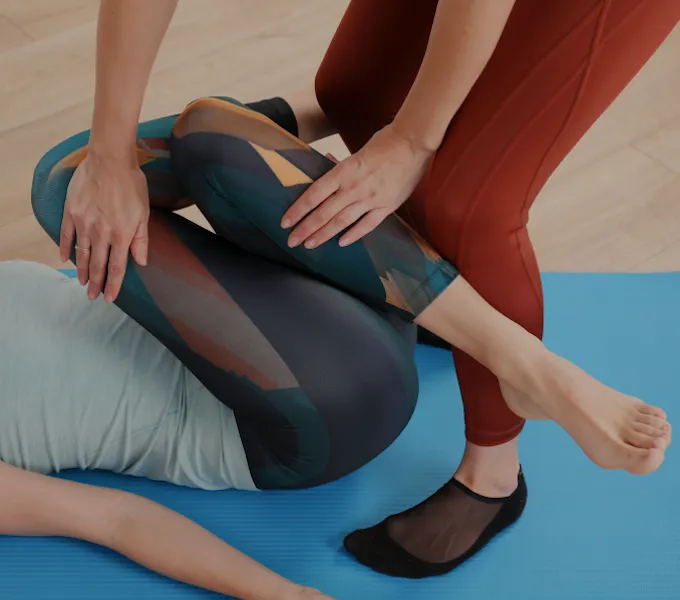
Can't Poop? Bloated? Try This Expert-Approved Bowel Massage
If you're sick of sitting in the bathroom, waiting in vain for your bowels to get moving, we have just the massage for you. It’s called abdominal massage, and when used regularly in combination with even more effective strategies (like staying hydrated and eating a fiber-rich diet), it can be super helpful in improving symptoms of bloating, gas, and constipation.
Best done in the morning, it's also a nice way to kick off your day with a little hands-on self-care.
How abdominal massage works
Abdominal massage, also known as bowel massage, is performed through your abdominals and puts gentle pressure on specific portions of your large intestine. This can help ease constipation by stimulating something called intestinal motility. Intestinal motility is basically the movement created by the gastrointestinal tract that propels digested food through your body. When intestinal motility is increased, feces and gas can move along more efficiently.
The results? You poop more often and feel less gassy and bloated.
While abdominal massage is typically safe for most to try, it is best to avoid it if you have a known or suspected abdominal obstruction, abdominal mass, or have had either abdominal surgery or abdominal radiation in the past 6 weeks.
Also, if constipation is brand new to you and doesn't ease up after a few weeks of improving your diet and drinking more water, check in with your physician first to make sure there are not any underlying medical issues behind your symptoms. If your physician feels it’s safe, and all red flags are cleared, go for it.
Get prepped for your massage
Start by lying down on a comfortable surface, such as the couch or your bed, then bend your knees with both feet placed on the floor. If you are not able to lie down, recline back in a chair. In either position, make that sure your abdominal muscles are relaxed.
Stress is counterproductive to digestion, so it typically helps to take a few belly breaths to release any lingering tension in your abs and calm your central nervous system.
Massage your bowels, step-by-step
The goal of abdominal massage for constipation or bloating is to massage along the path of your large intestine in the direction that feces travels on its way out. That means moving in a clockwise direction from the lower right corner of your abdomen, up and across your upper belly, down the other side, and across again, as shown in the image below.

Follow these steps to get gas and poop moving in the right direction:
- Start in the lower right-hand corner of your abdomen, near the inside of your hip bone. This is the beginning of the ascending colon.
- Using one or two hands (one on top of the other), sink your hand(s) into your abdomen with firm but comfortable pressure. You can use your fingers or make a fist with your hand and use your knuckles.
- While maintaining a firm pressure, massage up the right side of your abdomen, making small, clockwise circles as you go.
- Continue to massage with small circles as you move across the top of your abdomen (above your belly button, but below your rib cage), to the upper left-hand side along the length of the transverse colon.
- Continue to massage, now moving down the left-hand side of your abdomen to massage the descending colon.
- Once you reach the left-hand side of your abdomen just inside of your left hip bone, massage with small circles back to the lower right side of your abdomen. Repeat 10 or so times to help ease your symptoms.
Tips to maximize your bowel massage
- Lotion or massage oil can be helpful to provide a smooth massage.
- Use firm, but comfortable pressure throughout the massage, easing up as your body needs it.
- Try doing this massage in the morning, as this is when your bowels are naturally most active.
Abdominal massage is the most helpful when performed consistently on a regular basis, so consider adding it to your morning routine. If you continue to struggle with constipation, don't "just deal with it." Your bowel health is important and chronic constipation is a sign that something is amiss. Ask your doctor if physical therapy is right for you or book a coaching session with us to get some guidance.




